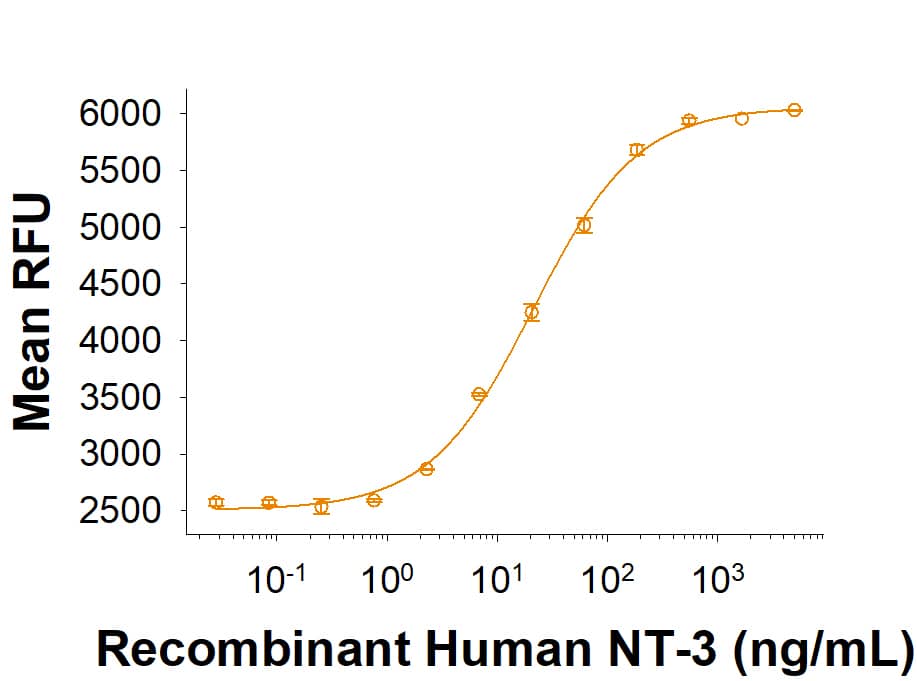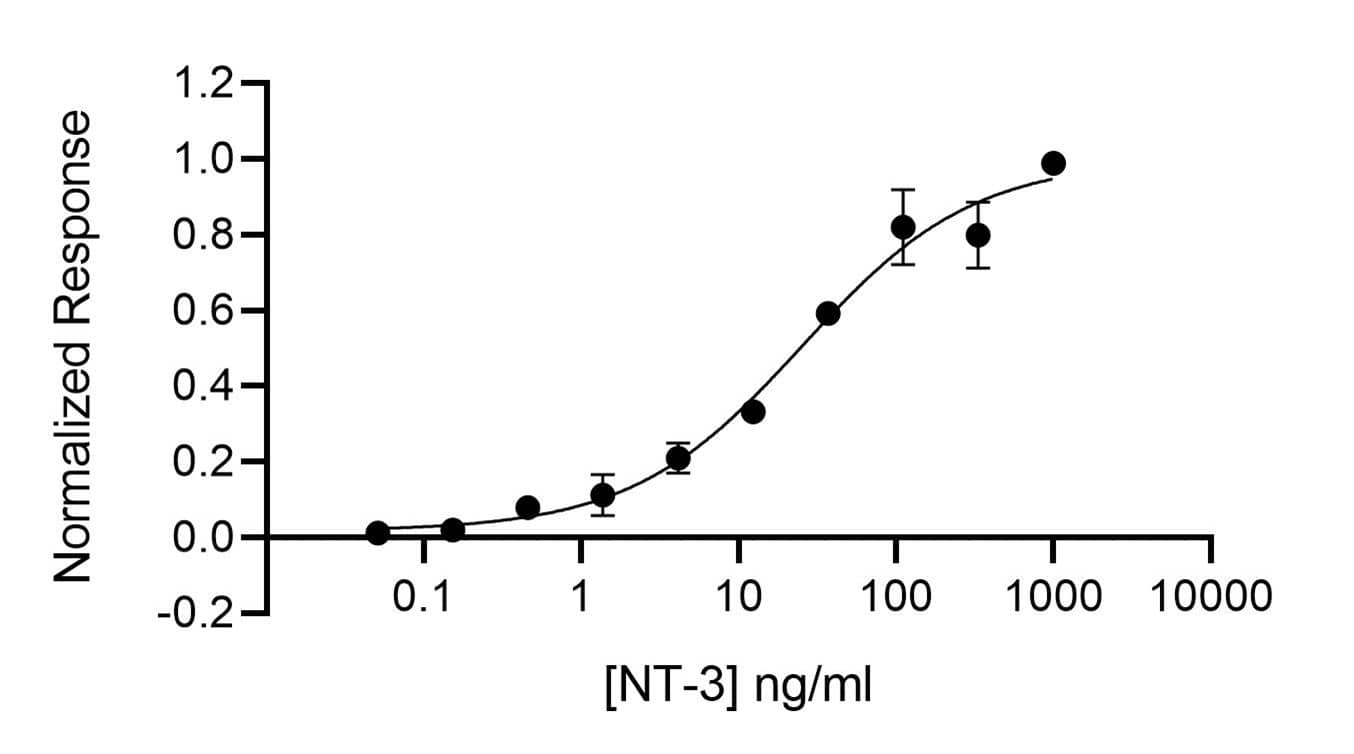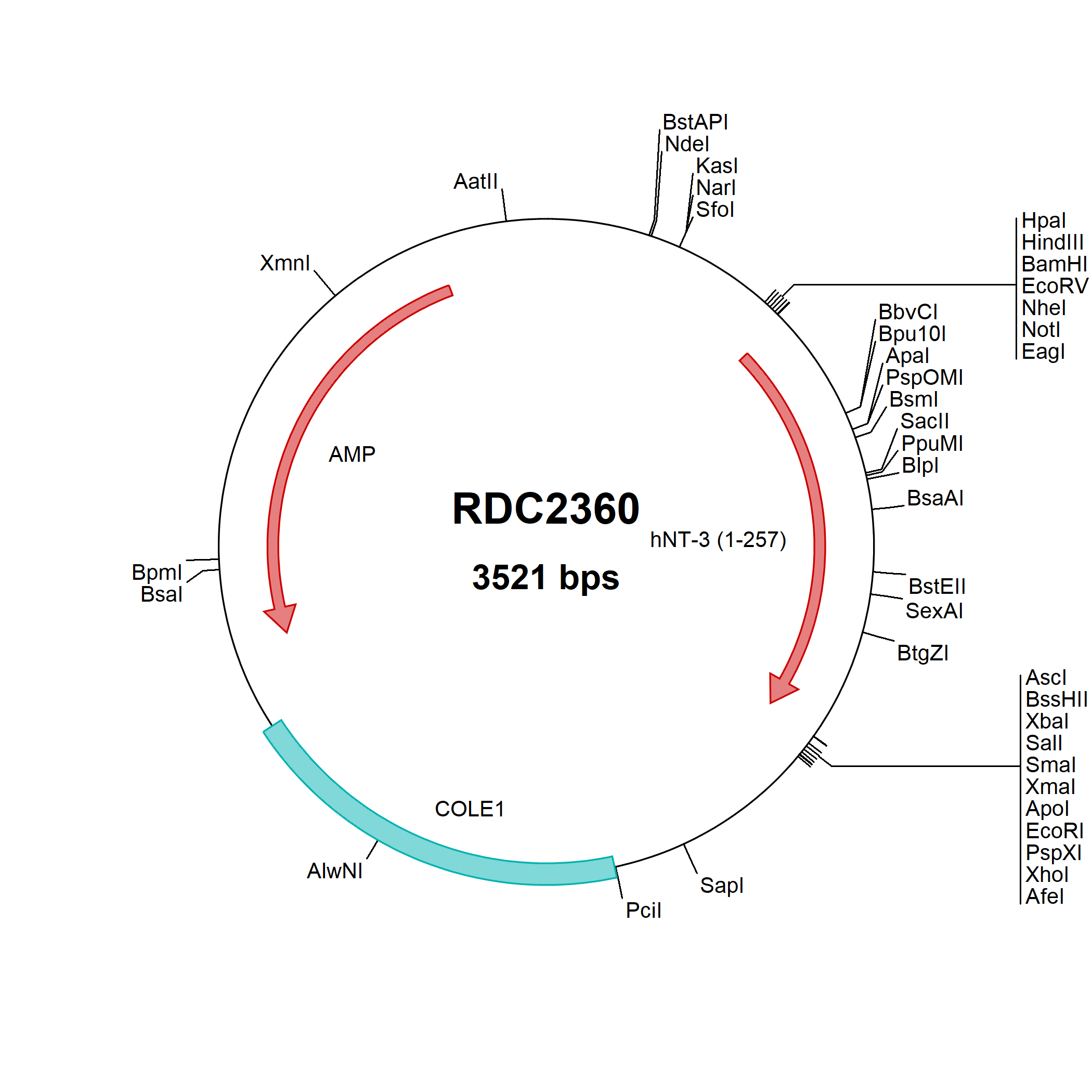NT-3 Products
Neurotrophin-3 (NT-3) is a member of the NGF family of neurotrophic factors (also named neurotrophins) that are required for the differentiation and survival of specific neuronal subpopulations in both the central as well as the peripheral nervous systems. The neurotrophin family is comprised of at least four proteins including NGF, BDNF, NT-3, ...
54 results for "NT-3" in Products
54 results for "NT-3" in Products
NT-3 Products
Neurotrophin-3 (NT-3) is a member of the NGF family of neurotrophic factors (also named neurotrophins) that are required for the differentiation and survival of specific neuronal subpopulations in both the central as well as the peripheral nervous systems. The neurotrophin family is comprised of at least four proteins including NGF, BDNF, NT-3, ...
11563-N3, a new product from mammalian cell line is available
| Reactivity: | Human |
| Details: | Goat IgG Polyclonal |
| Applications: | WB, IHC, Neut |
| Assay Range: | 31.2 - 2,000 pg/mL |
| Applications: | ELISA |
Contains 4 membranes-each spotted in duplicate with 79 different cytokine antibodies
(CHO expressed)
| Source: | CHO |
| Accession #: | P20783.1 |
| Applications: | BA |
| Reactivity: | Human |
| Details: | Mouse IgG1 Monoclonal Clone #41512 |
| Applications: | Neut |
| Reactivity: | Human, Mouse, Rat |
| Details: | Mouse IgG1 Monoclonal Clone #OTI5A2 |
| Applications: | IHC, WB, ICC/IF |
Human/Mouse/Rat/Porcine
| Source: | E. coli |
| Accession #: | P20783.1 |
| Applications: | BA |
| Reactivity: | Human |
| Details: | Goat IgG Polyclonal |
| Applications: | WB |
| Reactivity: | Human |
| Details: | Goat IgG Polyclonal |
| Applications: | WB |
| Reactivity: | Human |
| Details: | Mouse IgG Monoclonal Clone #C3 |
| Applications: | IHC |
| Reactivity: | Human |
| Details: | Rabbit IgG Polyclonal |
| Applications: | IHC |
| Reactivity: | Human, Porcine |
| Details: | Mouse IgG1 kappa Monoclonal Clone #D1 |
| Applications: | IHC |
| Reactivity: | Human, Porcine |
| Details: | Mouse IgG1 kappa Monoclonal Clone #D3 |
| Applications: | IHC |
| Reactivity: | Human |
| Details: | Rabbit Polyclonal |
| Applications: | IHC |
| Reactivity: | Human, Mouse, Rat |
| Details: | Mouse IgG1 Monoclonal Clone #OTI5A2 |
| Applications: | IHC, WB, ICC/IF |
| Reactivity: | Human |
| Details: | Rabbit IgG Polyclonal |
| Applications: | ELISA |
| Reactivity: | Human, Mouse, Rat |
| Details: | Mouse IgG1 Monoclonal Clone #OTI5A2 |
| Applications: | IHC, WB, ICC/IF |
| Reactivity: | Human, Mouse, Rat |
| Details: | Mouse IgG1 Monoclonal Clone #OTI5A2 |
| Applications: | IHC, WB, ICC/IF |
| Reactivity: | Human, Mouse, Rat |
| Details: | Mouse IgG1 Monoclonal Clone #OTI5A2 |
| Applications: | IHC, WB, ICC/IF |
| Reactivity: | Human |
| Details: | Rabbit IgG Polyclonal |
| Applications: | ELISA |
| Reactivity: | Human |
| Details: | Rabbit IgG Polyclonal |
| Applications: | ELISA |
Luminex Discovery Assays provide the most flexible assays on the market. These panels are completely customizable using our large menu of human, mouse, and rat analytes, making them the perfect tool for biomarker discovery and screening.
Build your own Luminex Assay with our Luminex Assay Customization Tool.
| Reactivity: | Human, Mouse, Rat |
| Details: | Mouse IgG1 Monoclonal Clone #OTI5A2 |
| Applications: | IHC, WB, ICC/IF |








![Western Blot: NT-3 Antibody (OTI5A2) [NBP1-47892] Western Blot: NT-3 Antibody (OTI5A2) [NBP1-47892]](https://resources.bio-techne.com/images/products/Neurotrophin-3-Antibody-5A2-Western-Blot-NBP1-47892-img0009.jpg)


![Immunohistochemistry-Paraffin: NT-3 Antibody (C3) [NBP3-41129] - NT-3 Antibody (C3)](https://resources.bio-techne.com/images/products/nbp3-41129_mouse-nt-3-mab-c3-61220242117593.jpg)
![Immunohistochemistry-Paraffin: NT-3 Antibody [NBP2-38196] Immunohistochemistry-Paraffin: NT-3 Antibody [NBP2-38196]](https://resources.bio-techne.com/images/products/Neurotrophin-3-Antibody-Immunohistochemistry-Paraffin-NBP2-38196-img0002.jpg)
![Immunohistochemistry-Paraffin: NT-3 Antibody (D1) [NBP3-41212] - NT-3 Antibody (D1)](https://resources.bio-techne.com/images/products/nbp3-41212_mouse-nt-3-mab-d1-61220242116223.jpg)
![Immunohistochemistry-Paraffin: NT-3 Antibody (D3) [NBP3-41213] - NT-3 Antibody (D3)](https://resources.bio-techne.com/images/products/nbp3-41213_mouse-nt-3-mab-d3-61220242055454.jpg)
![Immunohistochemistry-Paraffin: NT-3 Antibody [NBP3-14428] Immunohistochemistry-Paraffin: NT-3 Antibody [NBP3-14428]](https://resources.bio-techne.com/images/products/NT-3)

